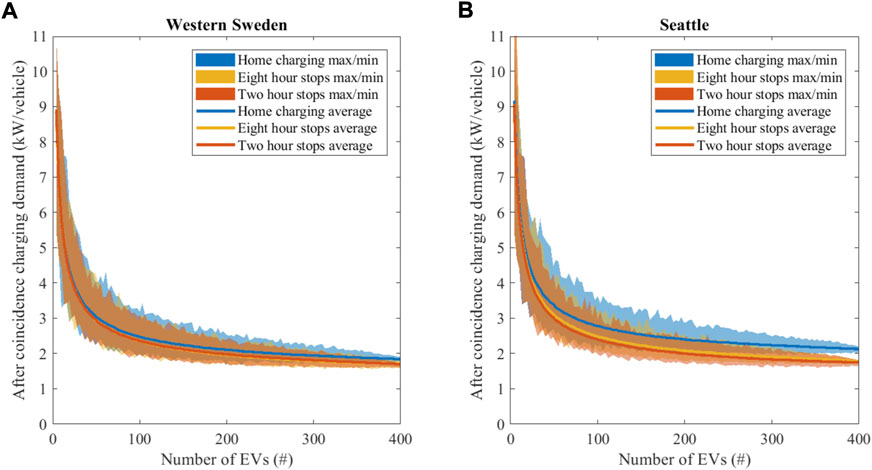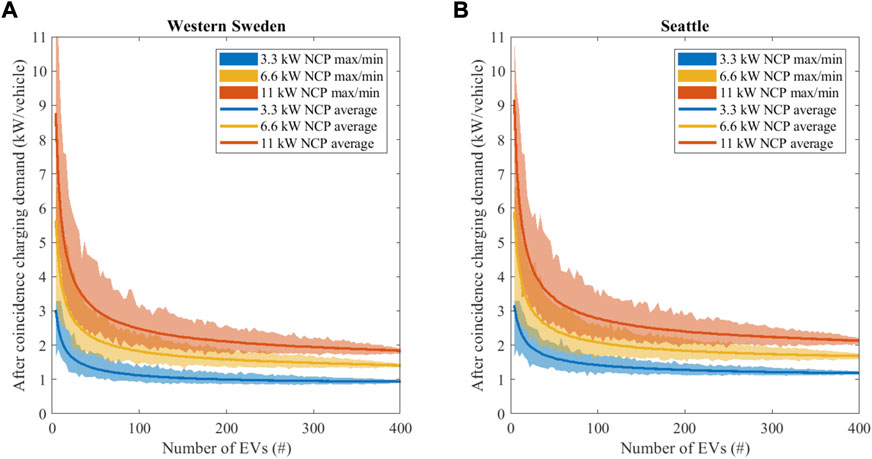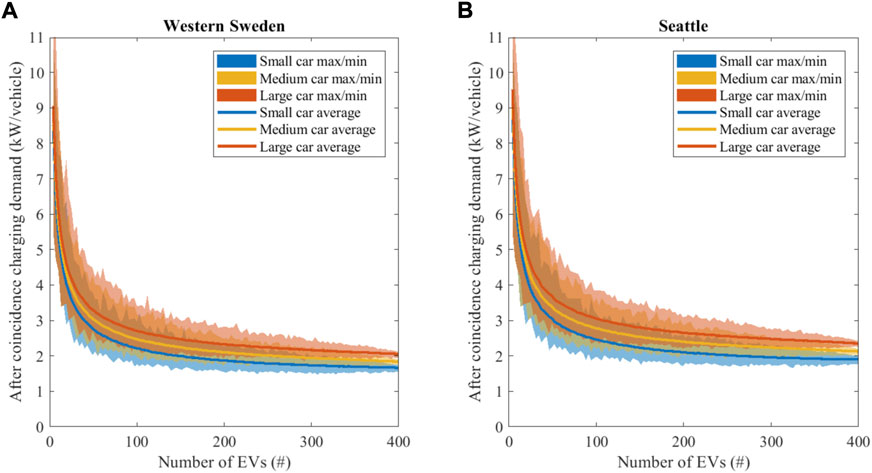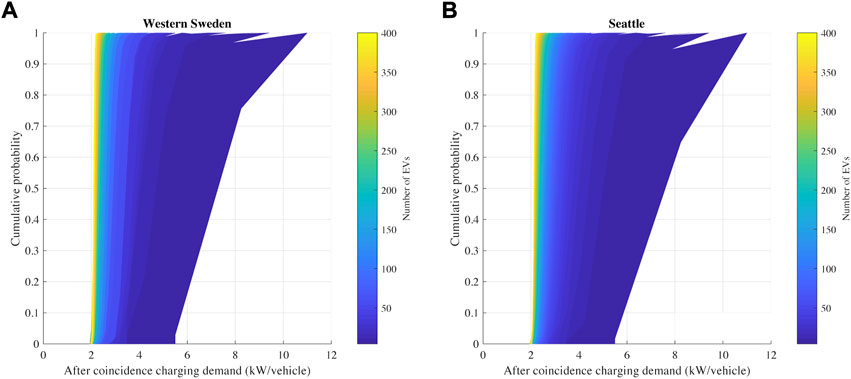- Department of Space Earth and the Environment, Chalmers University of Technology, Gothenburg, Sweden
A Corrigendum on
Comparison and analysis of GPS measured electric vehicle charging demand: The case of western sweden and seattle
by Hartvigsson E, Jakobsson N, Taljegard M and Odenberger M (2021). Front. Energy Res. 9:730242. doi: 10.3389/fenrg.2021.730242
Error in Figure/Table
In the original article, there was error in the Figures 2–5, all captions are correct. The correct Figures and order are presented below.

FIGURE 2. After-coincidence charging power demand for the highest hour of the year and as an average for all combination of vehicles for three different charging locations, (blue) charging at home location, (yellow), charging when the car is parked for at least 8 h in a row and (red) charging when the car is parked for at least 2 h in a row. The nominal charging power is 11 kW and the electricity demand per km is assumed to be 0.2 kWh/km. Data for Western Sweden in (A) and Seattle (B). Shaded areas show variation (max and min) from the randomized combinations.

FIGURE 3. After-coincidence charging power demand for the highest hour of the year and as an average for all combination of vehicles with different driving patterns. After-coincidence charging power demand for three different Nominal Charging Powers (NCP). Charging location is home only and electricity demand per km is assumed to be 0.20 kWh/km. Data for Western Sweden in (A) and Seattle (B). Shaded areas show variation (max and min) from the randomized combinations.

FIGURE 4. After-coincidence charging power demand for the highest hour of the year and as an average for all combination of vehicles with different driving patterns. After-coincidence charging power demand for three different sized cars. Charging location is home only and nominal charging power is 11 kW. Data for Western Sweden in (A) and Seattle (B). Shaded areas show variation (max and min) from the randomized combinations.

FIGURE 5. Empirical Cumulative Distribution Function (CDF) of after-coincidence charging power demand based on 132,000 randomized combinations of vehicles. Results for Western Sweden (A) and Seattle (B). The nominal charging power is 11 kW, the electricity demand per km is assumed to be 0.2 kWh/km and charging location is home only.
The authors apologize for this error and state that this does not change the scientific results or conclusions of the article in any way. The original article has been updated.
Publisher’s note
All claims expressed in this article are solely those of the authors and do not necessarily represent those of their affiliated organizations, or those of the publisher, the editors and the reviewers. Any product that may be evaluated in this article, or claim that may be made by its manufacturer, is not guaranteed or endorsed by the publisher.
Keywords: electric vehicles, charging demand, driving behavior, GPS measurements, Sweden, Seattle
Citation: Hartvigsson E, Jakobsson N, Taljegard M and Odenberger M (2022) Corrigendum: Comparison and analysis of GPS measured electric vehicle charging demand: The case of Western Sweden and Seattle. Front. Energy Res. 10:1043437. doi: 10.3389/fenrg.2022.1043437
Received: 13 September 2022; Accepted: 30 September 2022;
Published: 07 November 2022.
Edited and reviewed by:
ZhaoYang Dong, Nanyang Technological University, SingaporeCopyright © 2022 Hartvigsson, Jakobsson, Taljegard and Odenberger. This is an open-access article distributed under the terms of the Creative Commons Attribution License (CC BY). The use, distribution or reproduction in other forums is permitted, provided the original author(s) and the copyright owner(s) are credited and that the original publication in this journal is cited, in accordance with accepted academic practice. No use, distribution or reproduction is permitted which does not comply with these terms.
*Correspondence: Elias Hartvigsson, ZWxpYXMuaGFydHZpZ3Nzb25AY2hhbG1lcnMuc2U=
 Elias Hartvigsson
Elias Hartvigsson Niklas Jakobsson
Niklas Jakobsson